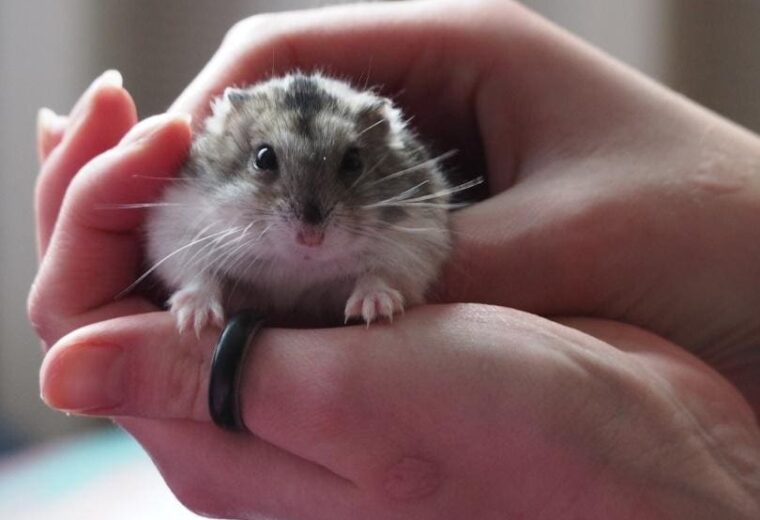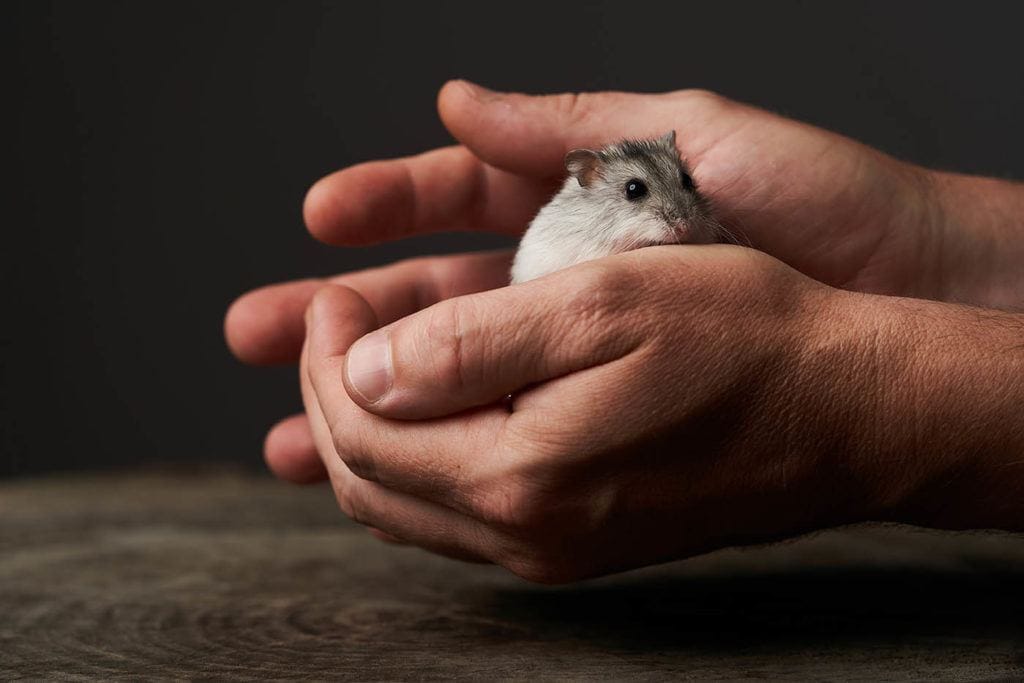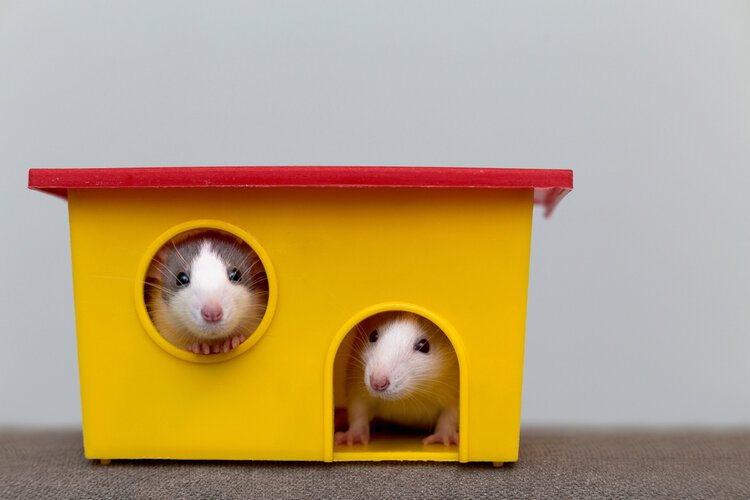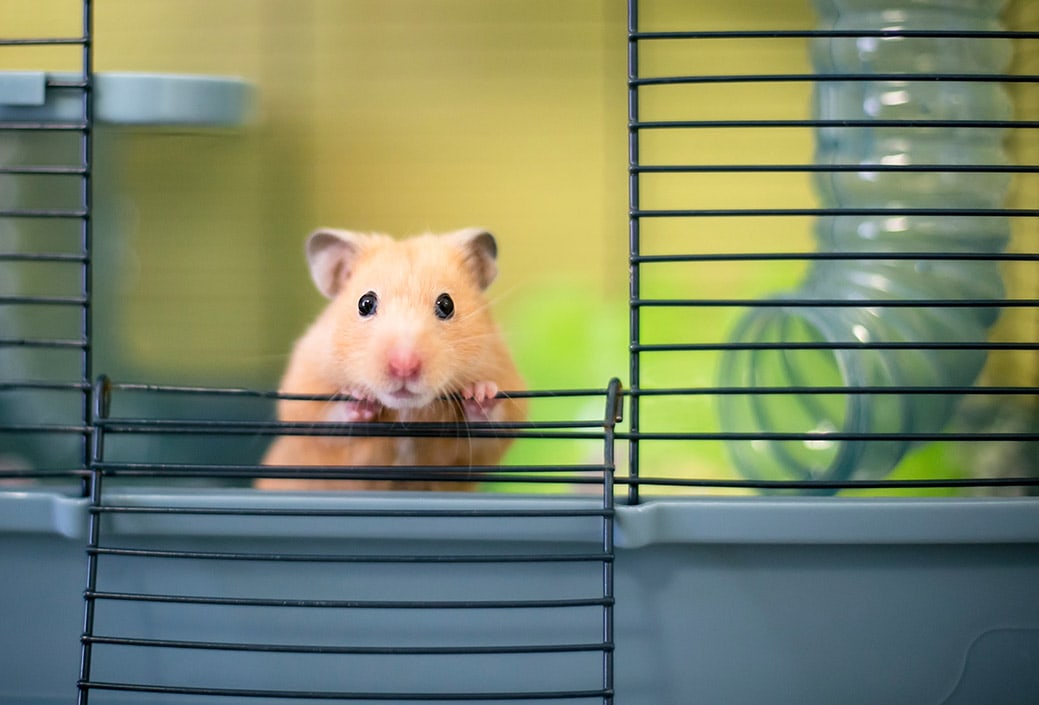
Hamsters are pretty popular pets for children and adults that want a pet but don’t want the mess and responsibility of a cat or dog. They are cute and easy to pick up, even with smaller hands. If you think about it, however, you realize that being picked up is probably pretty scary to a creature that’s so small.
It’s difficult to assess whether or not a hamster likes to be held. However, it has been proven that hamsters that are hand-tamed and frequently handled do behave differently than those that aren’t. Therefore, it’s safe to say that handling your pet does offer them some potential benefits.
We’ll tell you everything you need to know about hamsters and why they don’t like to be held below.
Do Hamsters Like Being Held?
Whether or not your hamster likes being held is not something that is proven by science yet. Cognitive and emotional studies in hamsters are limited. However, they do require physical touch to establish recognition patterns with other hamsters 1. Therefore, physical contact is indeed a part of their learning process when it comes to socialization with other hamsters.
Hand taming your hamster is beneficial for you and your pet. For you, the benefits include a more enjoyable experience with your pet, and of course, a minimized risk of being bitten by your pet whenever you handle them. A hand-tamed hamster is also more easy to examine for signs of distress or injury.
However, frequently handling a tamed hamster is considered beneficial for them too. In a study involving handling 2, it was found that hamsters that were frequently handled by humans for a few minutes everyday were more readily accepting of another hamster being introduced to their enclosure. They responded more favorably to the interaction when compared to hamsters that were handled by forceps, and these hamsters displayed markedly higher levels of aggression and fighting.
This can be very beneficial if you ever plan on breeding your pets, as the process is considerably risky for hamsters, who show more stress in social situations than when housed in isolation 3.
A hand-tamed hamster can also be removed from their enclosure safely, which is beneficial, as it allows them to exercise and explore once outside, which is considered healthy for both mental and physical stimulation. Finally, hand-tamed hamsters seem to show no signs of physical fear or distress, which indicates that being hand-tamed is beneficial for minimizing their stress and, as a result, improving their overall health.

How to Hand-Tame Your Hamster
Some hamsters get used to being held faster than others, and some take time. There are a few things you can do to get your hamster used to being held.
Research
Prior to adopting your pet, you should thoroughly research the pet store or breeder from where you’ll adopt your pet. Hamsters should be socialized at a young age, and, if your source doesn’t do this and instead just breeds hamsters en-masse, they may likely not be receptive to your approach or interaction as pets.
Though all species of hamsters can be tamed, the dwarf species are particularly fidgety and more difficult to tame, as they usually love running around (and in the process may jump out of your hand!).

Examine Your Prospective Hamster
If you’re satisfied with your research, another crucial step prior to adopting your pet would be to carefully inspect your prospective hamster to see how tame they are. Make sure your hands are clean and dry before picking up a hamster for inspection. Hamsters have poor vision but exceptional noses. If they smell something on your hand, they may bite out of curiosity.
Approach your hamster of interest slowly, ideally from behind, slowly placing a hand under them and your other hand on top of them to carefully scoop them up. Do not quickly bring your hand towards the hamster right in front of their face. You may startle the hamster and a startled hamster might bite.
Hamsters that are held from a young age generally do not bite. If the hamster seems like an individual that bites, you might want to consider another hamster, especially if you have children at home. Despite their size, a hamster’s bite can pack a serious punch. If the hamster bites while in your hand, do not attempt to resist the bite or squeeze the hamster with your hands. Instead, immediately bring your hands near the bedding of the hamster’s cage and open your hands, releasing the hamster back into their enclosure.
Other signs that a hamster is not comfortable with human interaction include:

Start Small
Hamsters that are already tame prior to being adopted generally don’t mind being handled after being adopted. However, it’s still best to allow your hamster some time to explore their new environment and home before handling them.
The best way to get your hamster used to your presence is during feeding time. If they’re already tame, try offering them some food from your hand. If they aren’t tame, try to associate your presence with meal time. This lets them know that you’re not a threat.

Gradually Increase Interaction
Once your hamster is used to your presence, you can begin to increase the amount of interaction you offer them. This will allow them to gradually become more accepting of your presence. In a few days to a few weeks, you’ll have a hand-tamed fur ball that you can safely handle!
Dwarf hamsters are skittish creatures to begin with, so you’re going to have to be very careful and patient if you want your hamster to let you hold them in the future. Generally speaking, handling dwarf hamsters (particularly the Roborovksi hamsters) is a task best left to experienced hamster keepers.

Final Thoughts
It isn’t possible to ascertain whether or not a hamster likes being held. However, it is proven that handling your hamster is definitely beneficial for them and even makes the experience more rewarding for you as a pet owner.
While you can take steps to get your hamster used to being held, these take a bit of time, particularly if your hamster wasn’t socialized at a young age. However, handling a hamster can be easily done with some patience, practice, and the occasional treat or two.
Featured Image Credit: Attila Bódis, Pixabay








